Previous
Next
Previous
Next
Superior Science. Superior Sealants. Since 1981, MULTI SEAL® has manufactured high performance industrial tire sealants, scientifically formulated to virtually eliminate air loss due to punctures and slow leaks. Using proprietary formulas and ingredients, MULTI SEAL® products are blended in the United States specifically for industrial segments. MULTI SEAL® is the world leader for superior tire sealant technology.
MULTI SEAL® sealants are the world’s leading performer in the industrial, agricultural and power sports tire sealant market. Easily installed through the valve stem in minutes, one treatment lasts the life of your tires.
About Multi Seal®
We believe in educating our customers in regards to the science behind our product so that they understand why MULTI SEAL® is your solution.
Additional Resources
Superior Science. Superior Sealants. Since 1981, MULTI SEAL® has manufactured high-performance industrial tire sealants, scientifically formulated to virtually eliminate air loss due to punctures and slow leaks.
Purchase Today
“We have a hand cart that always had a flat tire when we needed to use it. The last time I inflated the tire I could hear the air escaping! After adding MULTI SEAL, the tire now holds air and our cart is back in operation — whenever we need it. I would definitely recommend using this product!”
Shannon Martinez
“Part of race prep involves tires that last. With Multi Seal, we ran the entire Baja 1000, and Parker 250 on the same tires with zero flats. That’s almost 1500 miles of abuse without needing to change a tire. We use to run tire blocks, but they were difficult to install. With Multi Seal, we can easily add superior protection against flats and make our tires last for longer than expected. So, now I’m sharing a little secret that we use in racing but maybe it’ll keep you from getting stranded!”
That’s almost 1500 miles of abuse without needing to change a tire. We use to run tire blocks, but they were difficult to install. With Multi Seal, we can easily add superior protection against flats and make our tires last for longer than expected. So, now I’m sharing a little secret that we use in racing but maybe it’ll keep you from getting stranded!”
Jaime Romero
“I installed MULTI SEAL® Heavy Duty tire sealant in the industrial R4 tires on my Kubota L4740 tractor before mowing over 50 harsh acres of thorny brush at my Texas ranch. I had no troubles with leaks or flats. Later, I also hauled off an old farm house with the front loader bucket with no flats from nails or other debris thanks to MULTI SEAL® Heavy Duty.
I now own a Kubota RTV900 utility vehicle which I did not add MULTI SEAL® Heavy Duty sealant; that is until the second time I drove it and one tire was already flat. So, I immediately installed MULTI SEAL® Heavy Duty in each tire and almost a year later – still no flats.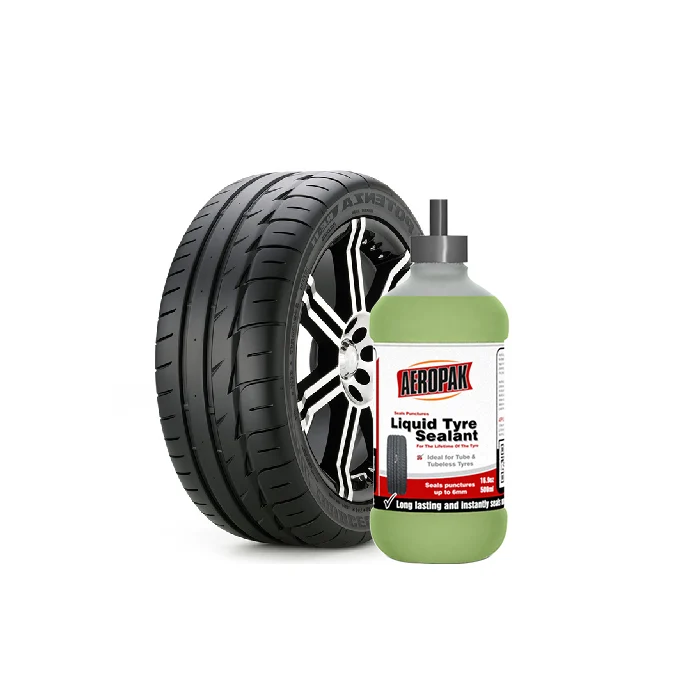 It works!”
It works!”
Satisfied Keith, Texas
“I’ve worked in the golfing industry for 20 years and I’ve tried every tire sealant to come down the pike. Why would MULTI SEAL® be any different? Your sales representative explained that your sealant would not rust my rims and it would stop constant under-inflation problems 100%. He said MULTI SEAL® would eliminate 95% of flats caused by punctures. I was skeptical but the steel pike demonstration got my attention!
My duties include the management of all mowing and maintenance equipment for seven golf courses. It’s a large fleet. We experience up to 15 flats regularly in just one week. After adding MULTI SEAL® tire sealant to all of our fleet tires our flats were reduced by 99.4% in just the first eight months.
Your product is incredible and the downtime it saves us is nothing short of miraculous!”
Eddie Menchaca, Supervisor
City of San Antonio Parks & Recreation DepartmentCo-owner of Seven Creative Group
“I had been having trouble with flats since I bought our Kubota 9540 about 18 months ago.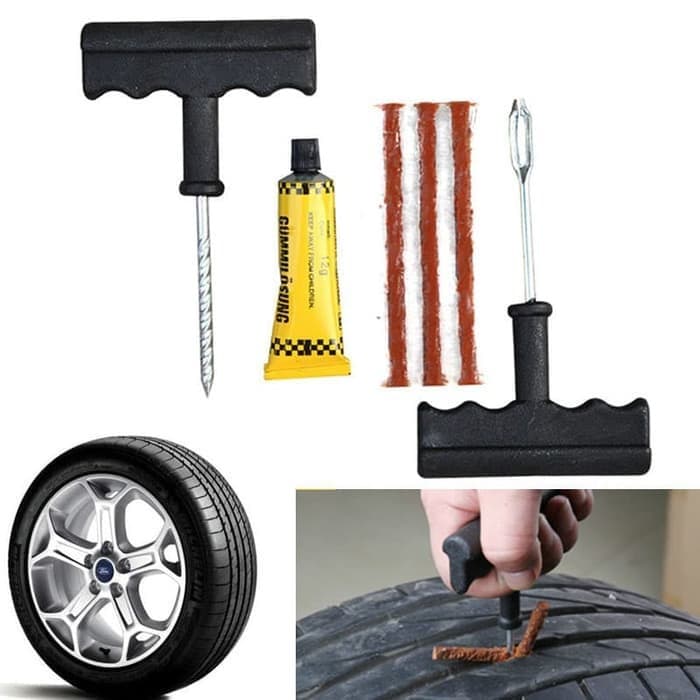 I tried other so-called tire sealants; none of which did any good. We do a lot of shredding on our Texas ranch. The property is covered in Huisache and Mesquite trees, and we always have big trouble with flats when shredding it.
I tried other so-called tire sealants; none of which did any good. We do a lot of shredding on our Texas ranch. The property is covered in Huisache and Mesquite trees, and we always have big trouble with flats when shredding it.
The first day we had three flats. It was going to cost $3,500 to fill my tires with foam. I decided to try MULTI SEAL ®instead on the recommendation of my farm supply dealer. MULTI SEAL® costs much less, and I finished the shredding at the ranch without ANY flats. In fact, I added the leftover MULTI SEAL® to my utility vehicle “mule” that already had three leaking tires and have had no flats or leaks since. I plan to put it in every tire on the ranch.
Thanks MULTI SEAL®.”
Wes ColeCole Cattle Company, Victoria, Texas
HYDRO 1500™ is protecting thousands of tires from job-stopping flats and leaks in vehicles and equipment for off-road use, including:
Tractors
Loaders
Cranes
Reach Forklifts
HYDRO 1500™ is the most effective sealant for the preventative maintenance and protection of ballast-filled tires.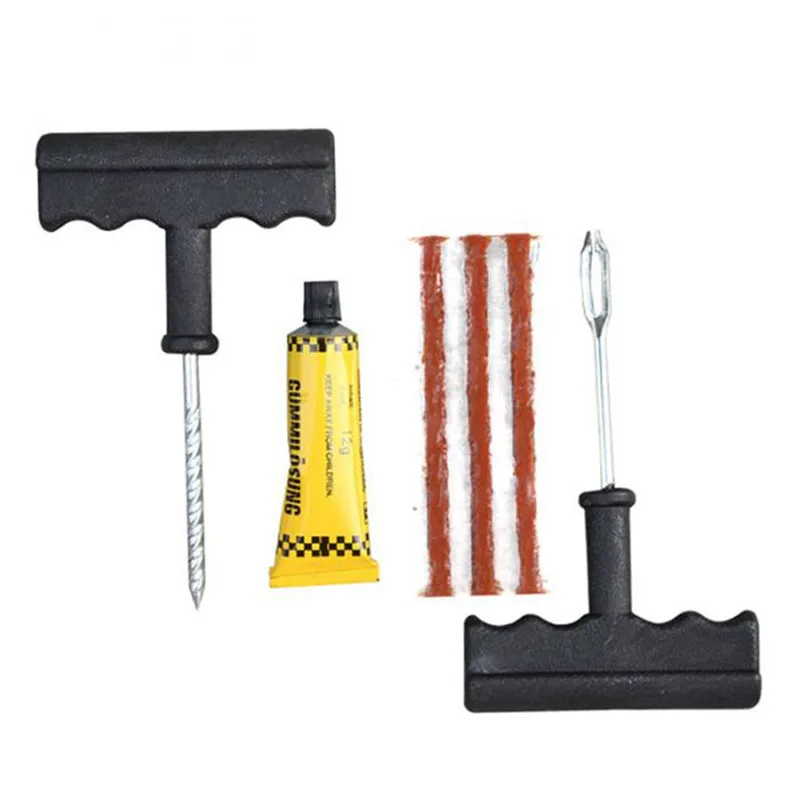 Superior science. Superior sealants.
Superior science. Superior sealants.
HYDRO 1500™
MULTI SEAL® PRO HD 2500™ is also ideally suited for on- and over-the-road vehicles including:
Tractor/trailer rigs (18 wheelers)
Sanitation Trucks
Heavy Farm Trucks
Concrete Trucks
Dump Trucks
Cargo Trailers
Any Over-the-Road Heavy Haulers 3/4 ton or heavier
PRO HD 2500™
ARMOR 3500™ has been field tested in a variety of applications, including military, agricultural, mining, and construction environments perfectly suited for use in many industrial vehicles, such as:
Sanitation Trucks
Articulated Loaders
Road Graders
Quarry Equipment
Logging Equipment
Military Vehicles
ARMOR 3500™
Contact form
Reduce downtime with Ride-On HDOTR tire sealant: a revolutionary gel that can turn every tire into a self-sealing tire.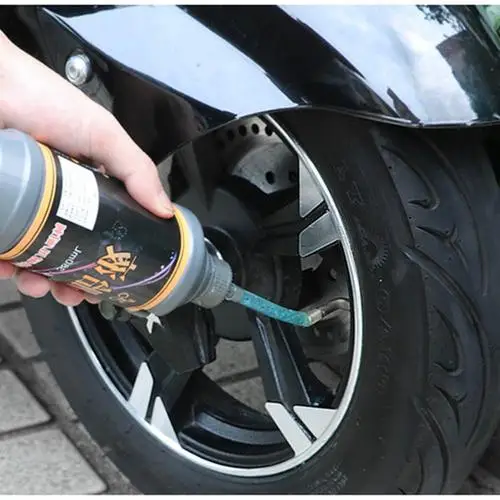 A mix of rubber particles and combination of fibers - including aramid fibers, six times stronger than steel - help seal punctures in the crown area of the tire caused by objects up to 12.5 millimeters (1/2") in diameter. The environmentally friendly, high-tech gel creates a sealing layer inside the tire casing. This layer helps to cool, seal and repair tires automatically and stays active for years - the entire legal life of the tire.
A mix of rubber particles and combination of fibers - including aramid fibers, six times stronger than steel - help seal punctures in the crown area of the tire caused by objects up to 12.5 millimeters (1/2") in diameter. The environmentally friendly, high-tech gel creates a sealing layer inside the tire casing. This layer helps to cool, seal and repair tires automatically and stays active for years - the entire legal life of the tire.
Heavy Duty Off-Road Formula (HDOTR) is designed for off-the-road vehicles that require extra protection in extreme operating conditions. The HDOTR formula was designed for use by landfills, quarries, construction companies, or any mission critical vehicle that travels less than 40 mph (66km/h). The HDOTR formula offers maximum protection against punctures from objects up to 1/2" (12.5 mm) in diameter. It is ideal for skid steers, scrappers, graders, mining and logging vehicles. The HDOTR formula conditions casings and o-rings to prevent bead welding, protects against rust and corrosion, and makes mounting and demounting tires faster, safer and easier.
Ride-On helps tires maintain their set-point pressure much longer than untreated tires and lowers operating temperatures by up to 7% or even more. These features combined, result in less wear and tear: tires last up to 25% longer or more.
We can only offer our clients the best to prevent downtime. For us, that’s Ride-On.
- Peter van Loon, managing director Jason's Tyres
✔ Agriculture
✔ Construction
✔ Eartmoving
✔ Mining


For more information read the Safety Data Sheet (SDS) document
SDS document »
The world's first tire appeared in 1888. It consisted of a rubber canvas mixture. John Boyd Dunlop spoke of his invention as follows: "Elastic bearing surfaces around the wheel rims facilitate movement and reduce the noise they create when driving." He sought to improve the smoothness of his son's tricycle, which is how he came up with the idea for the pneumatic tire. Only a few years later his invention was named as "Car tire".
The car tire is one of the most important elements of the wheel, consisting of a flexible
rubber-metal-fabric shell mounted on the wheel rim. The tire provides contact between the vehicle and the road surface and is designed to absorb minor vibrations caused by uneven road surfaces in the contact patch.
Contact patch - the area of contact between the tire and the road surface.
Solid Tire: A tire that is made entirely of rubber. Used mainly on the first cars. Nowadays, they are mainly used in industrial and household devices and children's bicycles. This tire is not afraid of punctures.
Elastic tyre: tire used in the tank industry. All the road wheels of the tank were supplied with such tires. This gave the tank an extremely smooth ride.
Pneumatic tyre: a tyre, the flexibility of which is provided by compressed air in a sealed cavity.
Safety tyre: the tire has reinforced sidewalls. The presence of a special supporting component allows them to support the weight of the car without settling, even when deflated.
Reinforced
sidewall
Regular tires
Run-flat tires
side support
— steel carcass tyre: a radial tyre, the cord of which is made of metal threads.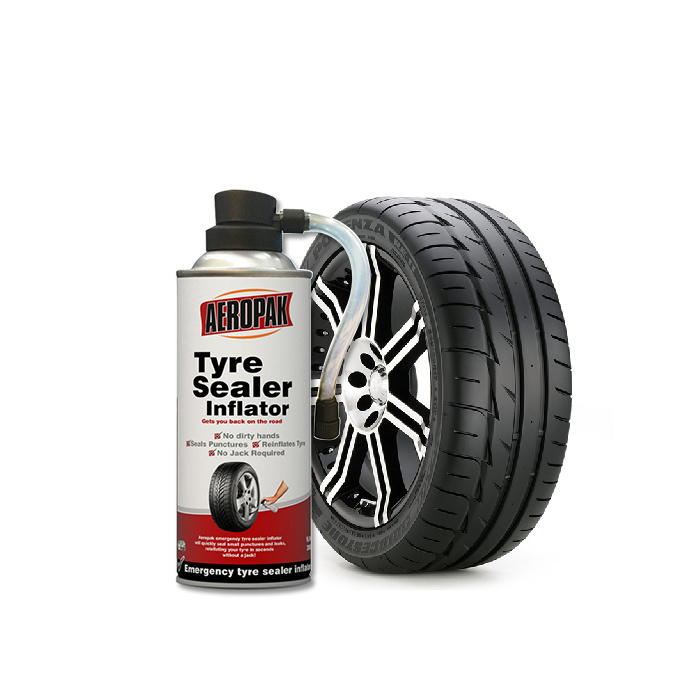
- tire with nylon (nylon) cord: pneumatic tire, the cord of which is made of nylon (nylon). Tires produced with this type of cord are lighter by ?. Such a tire is not afraid of side impacts, it does not form “hernias” and “hairs” do not appear when the rubber is worn, which can pierce the chamber.
— diagonal tire: this is a
pneumatic tire whose
cord angle in the carcass
and breaker is located from 30° to
40° to the plane passing through the
tire axle. When this thread cord
cross, keeping
the balance of the structure in the profile
tire.
— radial tire:
pneumatic tire with
radial arrangement of
cords. This type of tire has
more elasticity and
load capacity. Such tires
are marked with the letter "R". Such a
tire has a non-equilibrium
tire profile design.
— belted diagonal tire
: a diagonal tire in which the cords
are located at an angle
of more than 60° to the plane
passing through the tire axle.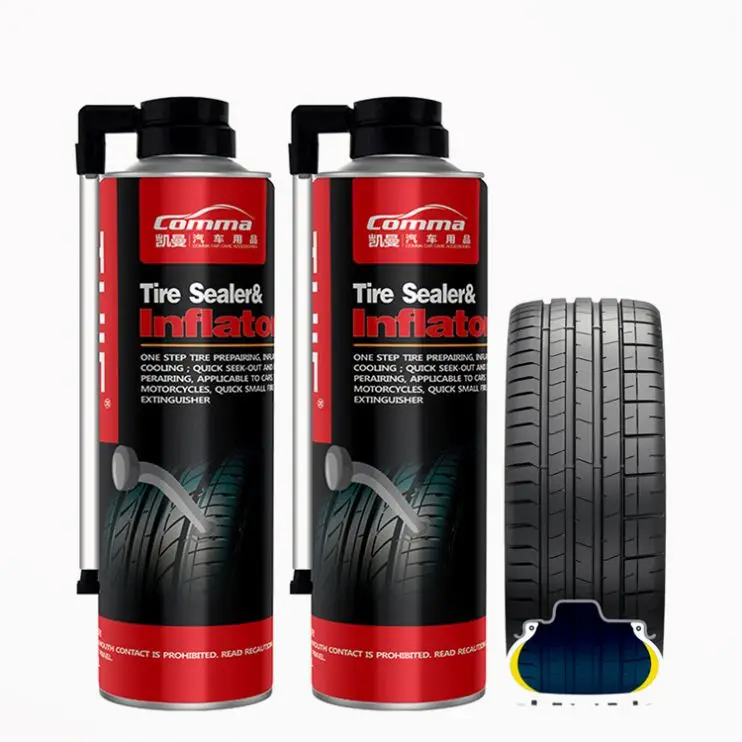
- tubed tyre: pneumatic tire inside which
has a tube. The chamber consists of a rubber compound.
At present, tires of this type are practically not used
except for commercial vehicles.
- tubeless tyre: pneumatic tire coated
on the inside with a layer of viscous airtight rubber. These
tires are the most common due to their reliability,
lighter weight and ease of use.
Camera
- universal tyre: tire with
universal tread pattern
for operation on
unpaved roads and roads with
improved surface.
- road tire: tire with
road tread pattern,
providing good
grip on the road surface
at high speeds.
- off-road tire
: pneumatic
tire with a tread pattern
off-road,
allowing the car
to move on wet black earth,
wet meadow and snowy field.
- tire type "PC": tires of this
type have a radial
arrangement of carcass threads and
removable tread, reinforced with
steel cord. Removable
Removable
protector is made from
one or three rings. At the time of inflation
of such a tire
, the tread rings
are firmly seated in place.
- rain tire: tire
eliminates the effect of
hydroplaning, especially in
heavy rain. Squeezing out
water from the contact patch occurs
due to a peculiar tread pattern
, and the sipes provide
"vacuum suction"
tires to the road.
– tire mixed: racing tire
built with
special technology with a special
compound and construction,
allows you to race in
wet track conditions
or light rain. The mixed
tire is a kind of middle class
between slicks and rain tires.
- pseudo-slick tire: tire
is designed for dry
asphalt.
— summer tire: tire with summer tread pattern
. Designed to work on dry or
wet road surfaces. Not recommended
use summer tires designed for
winter conditions. Because in this case accelerates
Because in this case accelerates
tread wear, vehicle controllability worsens. Winter tread pattern, just like the composition (compound) of rubber, is fundamentally different from summer. Traditional summer tread pattern.
— winter tire: pneumatic tire with winter
tread pattern designed to work on
snowy, wet, muddy (including slush) and
loose roads. Not recommended for use in winter
summer tires, because she quickly loses her grip
properties. Due to this, the braking distance
is greatly increased. In turn, winter tires are divided into
studded (a tire with studs located in the
tire, increasing grip on an icy
road) and non-studded. Winter tires have
a different pattern than summer tires.
The profile of a tire is the percentage of its height relative to its width.
- arched tire: as a rule, this is a tire with
profile in the form of an arch and the ratio of the height of the
profile to its width of 25-30%.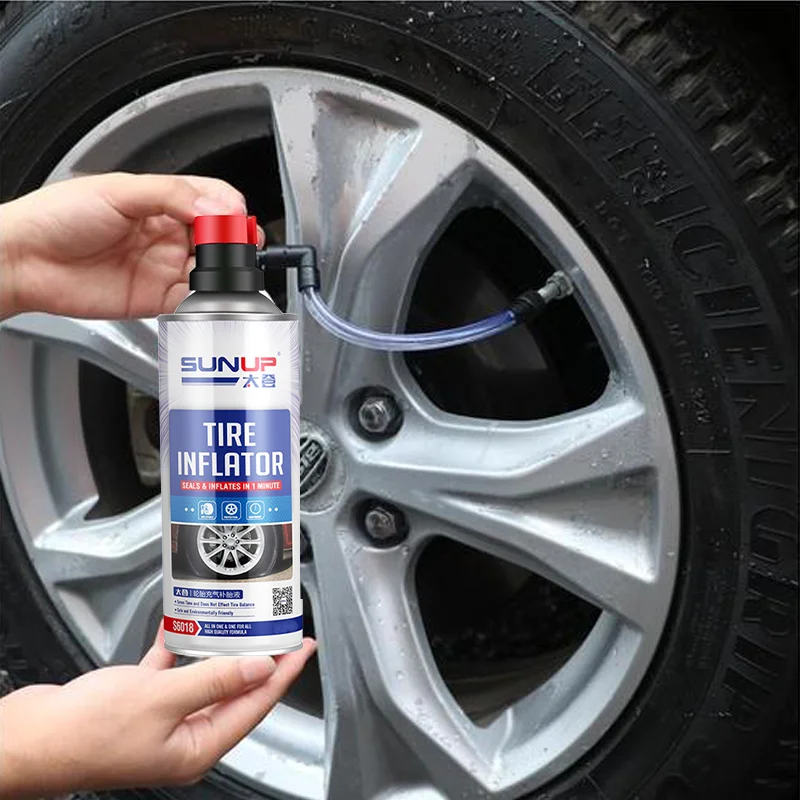 Arched tires
Arched tires
have large lugs. (Fig. 5) Tires of this
profile are mainly installed on
agricultural machinery.
— low-profile tire: a tire having a
profile height-to-width ratio of 30-50%.
Typically used on passenger cars. Tires
with this profile are only tubeless.
- regular profile tyre: has a ratio of
profile height to its width 51-80%. Usually with
fixed pressure 1 and installed on
road cars. Tires of this profile are
chambered and tubeless.
- wide profile tire: Tires with this
profile are available in tube and tubeless
versions (see arched tire). The main difference between
wide-profile tires and conventional tires is the width of the
profile, increased by one and a half to two times, more than
strong carcass and side part. Such tires can0005 be pressure regulated 2 .
— pneumatic roller: tire with a thin-walled elastic
rubber-cord casing, operating at
ultra-low pressure. Pneumatic rollers are distinguished by their
Pneumatic rollers are distinguished by their
profile width, which usually exceeds the outer
diameter of the pneumatic roller. Differs in lower pressure
(10-250 kPa). Due to the low pressure in
tires, the transport does not leave a track.
1 Fixed pressure tires are used in most automotive applications. Both light and heavy.
2 Pressure-regulated tires have a wider section (25-40%) than conventional tires. Less cord layers (1.5-2 times) and soft rubber layers between cord layers. Also, tires of this class have an increased area of support on the ground (2-4 times with a decrease in pressure), a lower specific pressure on the ground and have greater grip and elasticity. The air pressure in such tires is regulated by special equipment installed on the car. The adjustment is made mainly from the cab and allows you to maintain the required pressure in the tires depending on the operating conditions, but also to continuously supply air to the tires in case of punctures and minor damage.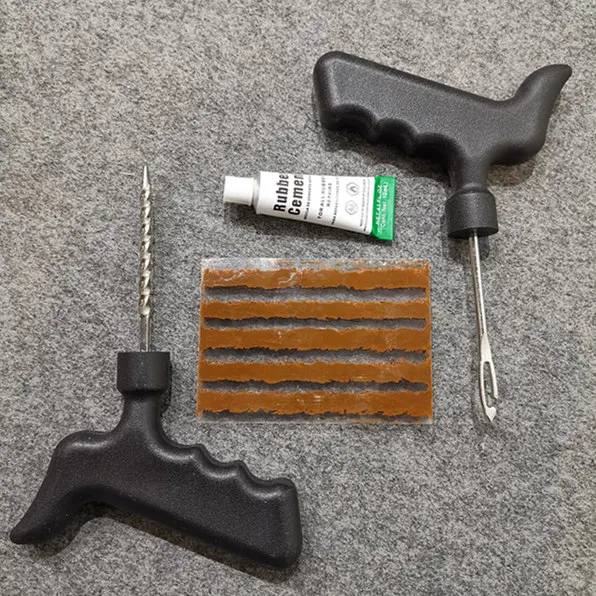 It is worth noting the height of the lugs, which can reach 30 mm. Tires of this class have a reduced load capacity.
It is worth noting the height of the lugs, which can reach 30 mm. Tires of this class have a reduced load capacity.
- ultra-low pressure tire: internal air pressure is about 0.05-0.08 MPa.
- low pressure tire: internal air pressure is about 0.1-0.4 MPa.
- medium pressure tire: internal air pressure is about 0.4-0.6 MPa.
- high pressure tire: internal air pressure of about 0.6-0.7 MPa and above.
- Variable pressure tyre: In this class of tires the pressure can be changed according to
from operating conditions. ( see wide profile tire )
1 MPa = 9.8692 atm
Anti-Puncture Sealant is a special compound that can protect car wheels from punctures and cracks. Consider the principle of its operation, advantages and disadvantages, method of application. Let's name a few of the most popular emergency tire sealants.
The first sign of a puncture or crack in a tire is a drop in pressure.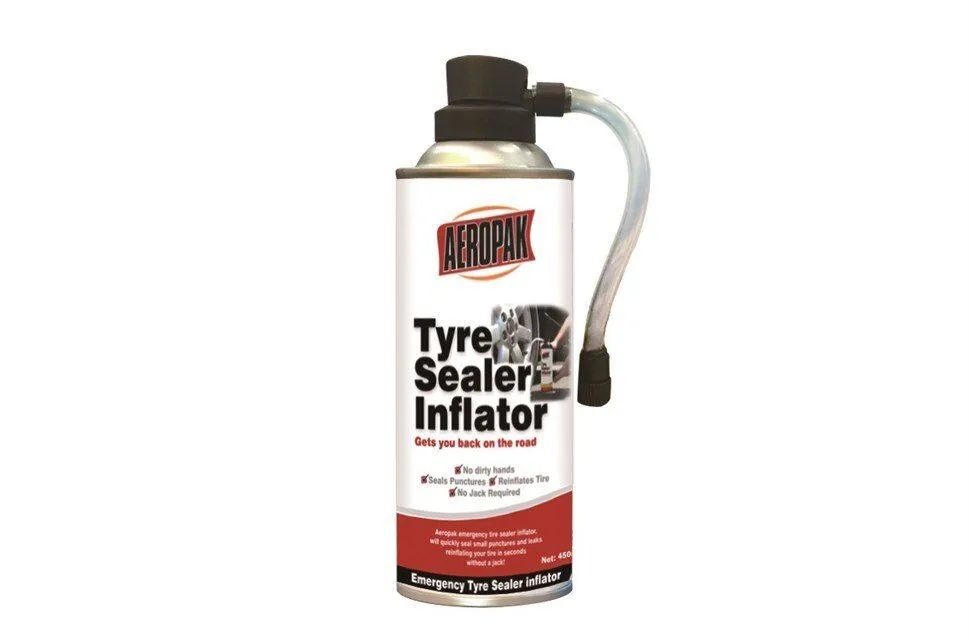 At the same time, while driving, it begins to “pull” the steering wheel, and the car “drives” when cornering.
At the same time, while driving, it begins to “pull” the steering wheel, and the car “drives” when cornering.
Not all motorists carry spare wheels, a jack and a wheel wrench with them. In addition, there are often situations of simultaneous damage to several tires. For such cases, special tools have been developed - anti-puncture sealants.
Initially, they were designed for combat conditions, when damage to the wheel could be fatal. Gradually, these funds were introduced into civilian transport and are still widely used by car owners.
Tire sealants are a mixture of liquid rubbers and polymers, often reinforced with carbon fibers that harden on contact with oxygen in confined spaces. The mechanism of action of these agents does not allow them to polymerize when inside a solid tire, since the molecular structure is in constant motion.
When a puncture is formed in the tire, the sealant is expelled under air pressure through the hole formed, is fixed on its walls from the perimeter to the center and hardens.
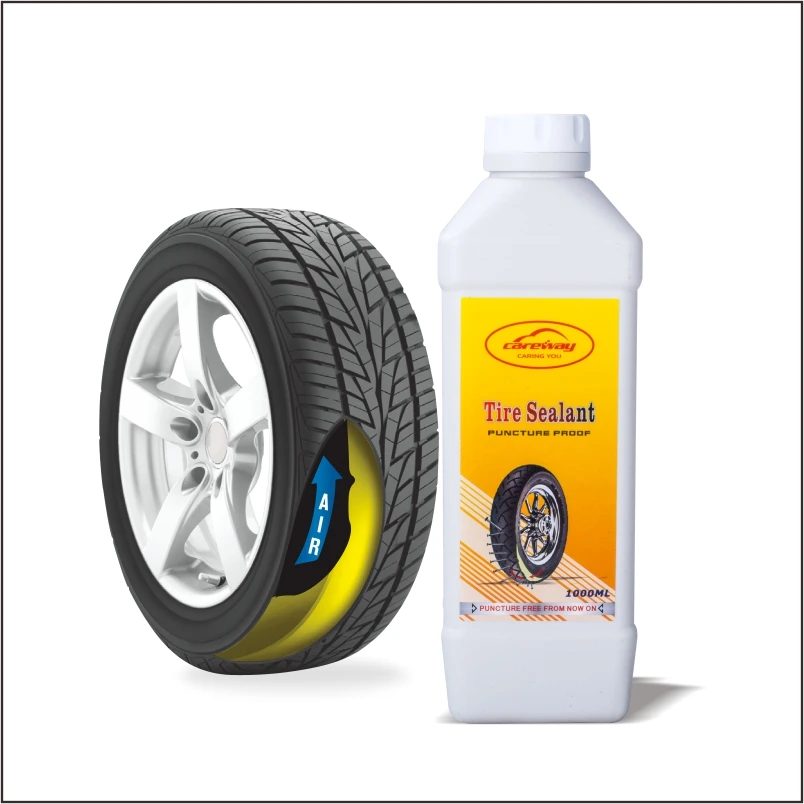
Due to the fact that the thickness of a standard tire at its thinnest point is at least 3 mm, and the diameter of the puncture is usually small, a hard plug forms in the rubber at the site of the tunnel.
The maximum puncture diameter that the sealant can handle is 4-6 mm (depending on the manufacturer). At the same time, the tool works effectively only on punctures in the area of \u200b\u200bthe sole of the tire, especially in areas of the tread ridges. A conventional tire filler is not able to eliminate side cuts, since the thickness of the rubber in this area is maximum. The exception is pinpoint lateral punctures with a diameter of not more than 2 mm.
Anti-puncture sealant for tires is, first of all, a prophylactic agent. It must be filled when the rubber is not yet damaged. Sealants that are poured after a puncture are called repair.
Tire fillers (anti-punctures) are poured into a cold wheel. For refueling, unscrew the spool from the tire valve and wait until all the air has escaped.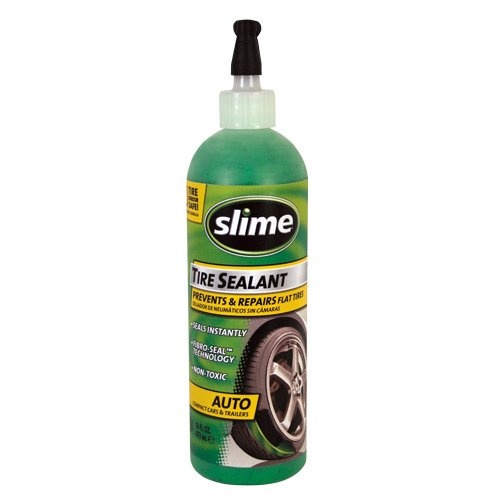 After that, the sealant is thoroughly shaken and injected into the tire through the valve.
After that, the sealant is thoroughly shaken and injected into the tire through the valve.
Please note that you need to fill in as much product as the manufacturer recommends for your tire size. Too much sealant may cause wheel imbalance, too little may not work.
After filling the sealant and inflating the tire, it is necessary to drive several kilometers at a speed of 60-80 km / h in order for the composition to be evenly distributed over the inner surface. If after that there is a noticeable runout of the wheel, balancing will be required. If it is not observed, the procedure can be neglected.
Repair sealants are poured into the tire after a puncture. Before downloading, you need to remove the foreign object, if it still remains. Tire repair compounds are usually sold in cans with a nozzle to connect to the tire valve. They are pumped into the wheel under pressure. The principle of operation of such funds is similar to preventive anti-puncture.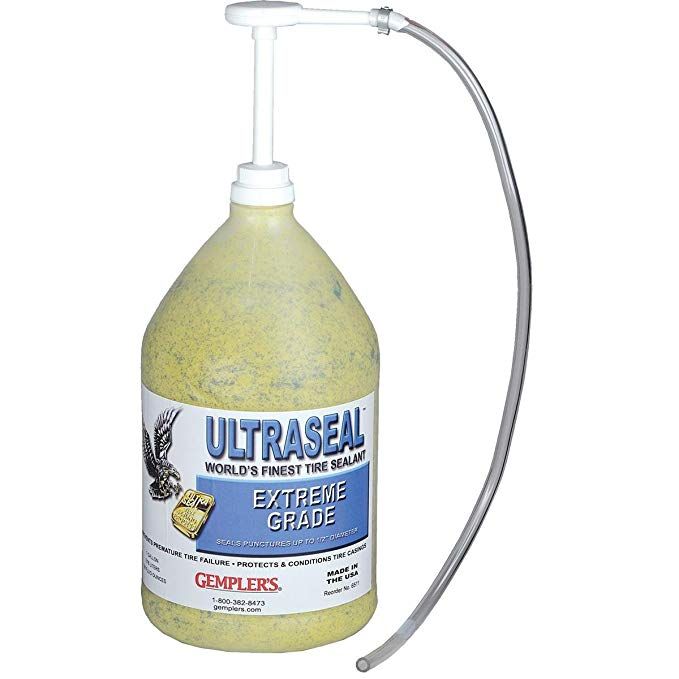
It must be understood that tire sealant is not a highly effective and durable puncture control product.
It is impossible to predict how long the cork formed by this material will last. Most often it is enough for several tens of kilometers. Although in some cases it can last up to several years.
That is why, after a tire puncture, it is advisable to go to a tire fitting as soon as possible, clean the wheel of sealant residues and put a regular patch on the puncture site.
Let's take a brief look at anti-puncture sealants popular in Russia.
Preventive sealant, which, according to the instructions, is poured into the chamber before a possible puncture. The composition can also be used after tire damage. Available in 240 ml (for car tires), 360 ml (for SUVs) and 480 ml (for trucks) containers.
The product contains carbon fibers, which increase the strength of the cork and its service life before failure.